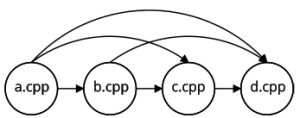What do you do when your boss asks you how long an enhancement or change request will take to implement? Do you use impact analysis? If not, it might be worth using it next time to develop a reliable estimate.
Impact analysis is “identifying the potential consequences of a change, or estimating what needs to be modified to accomplish a change.” 1 The major goal of this in software is to identify the source code affected by the proposed change. As software becomes increasingly large and complex, there is an ever increasing need to predict and control the effect of software changes. Not accurately estimating the size and complexity of the change can lead to poor estimates, delays in release schedules, architectural erosion, and unreliable software products.
Why is impact analysis important?
An impact analysis will confirm which part of the application you need to change, and tell you how much of the application may be affected by the change. Understanding the change impact enables teams to quickly and accurately respond to change requests. Teams can be responsive while maintaining control over scope and customer expectations. Impact analysis is essential on projects where quality and safety are an issue such as in medical devices, automotive, and aerospace. It helps developers calculate the impact of change.
Types of impact analysis
Two major technology areas for impact analysis are traceability analysis and dependency analysis. Traceability analysis examines the links between requirements, specifications, design elements, and tests. These relationships can be then analyzed to determine the scope of an initiating change. This addresses the impact from a broader perspective. Dependency analysis involves examining the linkage between program elements (variables, logic, modules, etc.) and determining the consequences of initiating a change in the source code. It provides a detailed evaluation of low-level dependencies in the code.
How to do an impact analysis
An impact analysis examines the proposed change and identifies components that might have to be created, modified, or discarded and estimates the effort associated with implementing the proposed change. There are generally three steps:
-
-
- Identify all files, classes, and methods that would be involved if this change were to be implemented.
- Understand all the possible implications of making the change. When a change is made there is often a ripple effect, so examining multiple levels of impact (ideally to transitive closure; see below) is ideal.

- (Optionally) Restructure your code to reduce the impact of the change
-
Summary
On complex projects with thousands of elements, manually determining what and who is affected by change is time consuming and error prone. Lattix Architect creates a report of what is affected when a change occurs. Lattix Architect helps you manage change and lets you review a change’s impact before the change is made. If you are interested in learning more about Lattix Architect, request a free trial today.
1. Bohner, S.A. and R.S. Arnold, Eds. (1996). Software Change Impact Analysis. Los Alamitos, California, USA, IEEE Computer Society Press.
